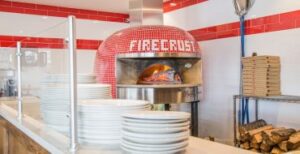
The Gluten Free Expo attracted thousands this weekend. People waited in line at the Convention Centre for over two hours to enter the event. It was sold out and some even tried to hawk their entry passes for profit. Parking was nearly impossible and the side-walks leading in and out, impassible. Yet, hype and allure notwithstanding, the Expo proved disappointing.
Sponsored by Choices Markets and featuring over one hundred exhibitors, this G-Free convention seemed to neglect the craving that most underpins the daily struggle of those suffering from celiac disease, i.e. : to enjoy eating good food just like the rest of us. Instead, there was an endless barrage of opportunities to sample tasteless crackers, bland pseudo-bread and nutritional bars.
The diagnosis— Celiac disease is an autoimmune disorder of the small intestine, which befalls people with its genetic predisposition (<1% of the pop.). Following initial exposure to gluten, which precipitates an inflammatory reaction in the lining of the digestive organ, the health and nutrition of a person of this genetic predisposition become imperilled The upshot is that celiacs get awfully ill if they eat any wheat, barley or rye; and on top of the initial symptoms upon ingestion, which include vomiting, diarrhoea, nausea, headache and fatigue, they also risk irreparable harm to their insides if they swallow even a crumb of gluten.
Bearers of a wheat allergy differ from celiacs in that they do not suffer the lifelong threat of gluten poisoning, nor its aggregative damage. Nonetheless, they can get very sick if they eat any wheat. Voluntary gluten abstainers differ further in that nothing about their ‘condition’ is congenital or life threatening All types attended the Expo. My critique centres on the experience of those affected by the allergy and the disease.
The affliction— Wheat, barley and rye are found in many recipes, including such staples of the North American diet as pizza, burgers, pasta, sandwiches, sushi (soy sauce is rife with gluten), whiskey and beer. Celiacs and other wheat allergics are not strangers to planning ahead. If venturing out into the restaurant jungle, they are well-advised, if well-accustomed, to expect that people won’t understand the depth of their intolerance and the severity of a potential poisoning. It is also possible that servers and cooks won’t be expertly informed about every ingredient found in each of their dishes. Going out gets complicated. And though I think restaurant personnel are improving at understanding and dealing with the dangers of ‘glutening’— perhaps because of such buzz-spreading events like the G-Free Expo, or at least in part thanks to the fashion of quinoa— the truth is that celiacs still pack a carefully-selected survival bar, just in case.
So habituated to having to opt out of delicious gnocchi or mouthwatering chow mein, the very last thing that celiacs wanted to see at the G-free Expo were more B-plans to great tasty food. The glut of granola and bird food did little to impress me. My plus-one, a celiac, was also disheartened by the Expo, and uninspired. We noticed very few examples of interesting cuisine.
The cure— There ought to have been cook-offs! They could have showcased appealing hot dishes (other than Noodle Box) instead of promoting every last energy bar on the market. Where was the inspiring baking? The difficulty with a gluten-free diet is finding ways to create your favourite recipes using gluten replacements. These can be hard to incorporate without compromising the integrity of the dish. I wanted proof that being a celiac or having a wheat allergy need no longer limit flexibility, convenience or gastronomic delight. Therefore, the hope was that restaurants could offer ample G-free options, that G-free food producers could offer healthy cooking alternatives, and that both groups would be present at the event. What we saw at the Expo, however, was that the old stuff-a-healthy-snack-from-home-in-your-back-pocket remains a real recourse.
Admittedly, though, it was encouraging to see thousands and thousands of Vancouverites waiting in line and paying twelve dollars, all of them harbouring the same hope I have. They were all there under one roof and, as Woody Allen says, “80% of success is showing up.”
 The Gluten Free Expo attracted thousands this weekend. People waited in line at the Convention Centre for over two hours to enter the event. It was sold out and some even tried to hawk their entry passes for profit. Parking was nearly impossible and the side-walks leading in and out, impassible. Yet, hype and allure notwithstanding, the Expo proved disappointing.
Sponsored by Choices Markets and featuring over one hundred exhibitors, this G-Free convention seemed to neglect the craving that most underpins the daily struggle of those suffering from celiac disease, i.e. : to enjoy eating good food just like the rest of us. Instead, there was an endless barrage of opportunities to sample tasteless crackers, bland pseudo-bread and nutritional bars.
The diagnosis— Celiac disease is an autoimmune disorder of the small intestine, which befalls people with its genetic predisposition (<1% of the pop.). Following initial exposure to gluten, which precipitates an inflammatory reaction in the lining of the digestive organ, the health and nutrition of a person of this genetic predisposition become imperilled The upshot is that celiacs get awfully ill if they eat any wheat, barley or rye; and on top of the initial symptoms upon ingestion, which include vomiting, diarrhoea, nausea, headache and fatigue, they also risk irreparable harm to their insides if they swallow even a crumb of gluten.
Bearers of a wheat allergy differ from celiacs in that they do not suffer the lifelong threat of gluten poisoning, nor its aggregative damage. Nonetheless, they can get very sick if they eat any wheat. Voluntary gluten abstainers differ further in that nothing about their ‘condition’ is congenital or life threatening All types attended the Expo. My critique centres on the experience of those affected by the allergy and the disease.
The affliction— Wheat, barley and rye are found in many recipes, including such staples of the North American diet as pizza, burgers, pasta, sandwiches, sushi (soy sauce is rife with gluten), whiskey and beer. Celiacs and other wheat allergics are not strangers to planning ahead. If venturing out into the restaurant jungle, they are well-advised, if well-accustomed, to expect that people won’t understand the depth of their intolerance and the severity of a potential poisoning. It is also possible that servers and cooks won’t be expertly informed about every ingredient found in each of their dishes. Going out gets complicated. And though I think restaurant personnel are improving at understanding and dealing with the dangers of ‘glutening’— perhaps because of such buzz-spreading events like the G-Free Expo, or at least in part thanks to the fashion of quinoa— the truth is that celiacs still pack a carefully-selected survival bar, just in case.
So habituated to having to opt out of delicious gnocchi or mouthwatering chow mein, the very last thing that celiacs wanted to see at the G-free Expo were more B-plans to great tasty food. The glut of granola and bird food did little to impress me. My plus-one, a celiac, was also disheartened by the Expo, and uninspired. We noticed very few examples of interesting cuisine.
The cure— There ought to have been cook-offs! They could have showcased appealing hot dishes (other than Noodle Box) instead of promoting every last energy bar on the market. Where was the inspiring baking? The difficulty with a gluten-free diet is finding ways to create your favourite recipes using gluten replacements. These can be hard to incorporate without compromising the integrity of the dish. I wanted proof that being a celiac or having a wheat allergy need no longer limit flexibility, convenience or gastronomic delight. Therefore, the hope was that restaurants could offer ample G-free options, that G-free food producers could offer healthy cooking alternatives, and that both groups would be present at the event. What we saw at the Expo, however, was that the old stuff-a-healthy-snack-from-home-in-your-back-pocket remains a real recourse.
Admittedly, though, it was encouraging to see thousands and thousands of Vancouverites waiting in line and paying twelve dollars, all of them harbouring the same hope I have. They were all there under one roof and, as Woody Allen says, “80% of success is showing up.”
The Gluten Free Expo attracted thousands this weekend. People waited in line at the Convention Centre for over two hours to enter the event. It was sold out and some even tried to hawk their entry passes for profit. Parking was nearly impossible and the side-walks leading in and out, impassible. Yet, hype and allure notwithstanding, the Expo proved disappointing.
Sponsored by Choices Markets and featuring over one hundred exhibitors, this G-Free convention seemed to neglect the craving that most underpins the daily struggle of those suffering from celiac disease, i.e. : to enjoy eating good food just like the rest of us. Instead, there was an endless barrage of opportunities to sample tasteless crackers, bland pseudo-bread and nutritional bars.
The diagnosis— Celiac disease is an autoimmune disorder of the small intestine, which befalls people with its genetic predisposition (<1% of the pop.). Following initial exposure to gluten, which precipitates an inflammatory reaction in the lining of the digestive organ, the health and nutrition of a person of this genetic predisposition become imperilled The upshot is that celiacs get awfully ill if they eat any wheat, barley or rye; and on top of the initial symptoms upon ingestion, which include vomiting, diarrhoea, nausea, headache and fatigue, they also risk irreparable harm to their insides if they swallow even a crumb of gluten.
Bearers of a wheat allergy differ from celiacs in that they do not suffer the lifelong threat of gluten poisoning, nor its aggregative damage. Nonetheless, they can get very sick if they eat any wheat. Voluntary gluten abstainers differ further in that nothing about their ‘condition’ is congenital or life threatening All types attended the Expo. My critique centres on the experience of those affected by the allergy and the disease.
The affliction— Wheat, barley and rye are found in many recipes, including such staples of the North American diet as pizza, burgers, pasta, sandwiches, sushi (soy sauce is rife with gluten), whiskey and beer. Celiacs and other wheat allergics are not strangers to planning ahead. If venturing out into the restaurant jungle, they are well-advised, if well-accustomed, to expect that people won’t understand the depth of their intolerance and the severity of a potential poisoning. It is also possible that servers and cooks won’t be expertly informed about every ingredient found in each of their dishes. Going out gets complicated. And though I think restaurant personnel are improving at understanding and dealing with the dangers of ‘glutening’— perhaps because of such buzz-spreading events like the G-Free Expo, or at least in part thanks to the fashion of quinoa— the truth is that celiacs still pack a carefully-selected survival bar, just in case.
So habituated to having to opt out of delicious gnocchi or mouthwatering chow mein, the very last thing that celiacs wanted to see at the G-free Expo were more B-plans to great tasty food. The glut of granola and bird food did little to impress me. My plus-one, a celiac, was also disheartened by the Expo, and uninspired. We noticed very few examples of interesting cuisine.
The cure— There ought to have been cook-offs! They could have showcased appealing hot dishes (other than Noodle Box) instead of promoting every last energy bar on the market. Where was the inspiring baking? The difficulty with a gluten-free diet is finding ways to create your favourite recipes using gluten replacements. These can be hard to incorporate without compromising the integrity of the dish. I wanted proof that being a celiac or having a wheat allergy need no longer limit flexibility, convenience or gastronomic delight. Therefore, the hope was that restaurants could offer ample G-free options, that G-free food producers could offer healthy cooking alternatives, and that both groups would be present at the event. What we saw at the Expo, however, was that the old stuff-a-healthy-snack-from-home-in-your-back-pocket remains a real recourse.
Admittedly, though, it was encouraging to see thousands and thousands of Vancouverites waiting in line and paying twelve dollars, all of them harbouring the same hope I have. They were all there under one roof and, as Woody Allen says, “80% of success is showing up.” 








